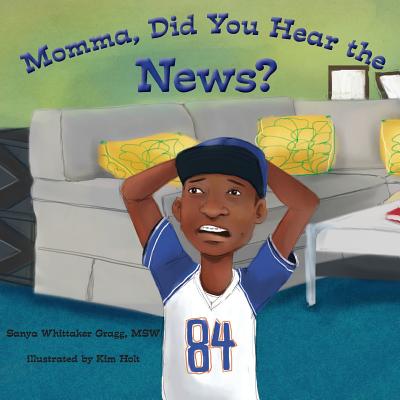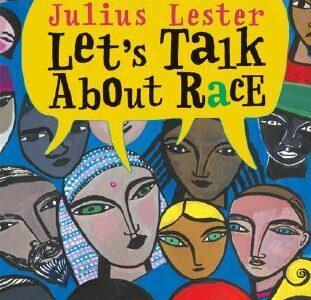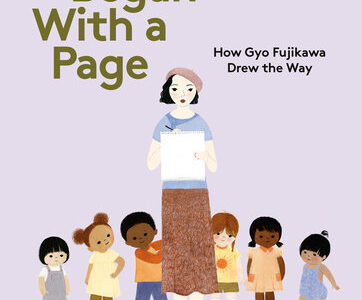In:Books
Momma, Did You Hear the News?
by Sanya Whittaker Gragg
“A to the. L to the. I-V-E. Come home ALIVE. That is the key!”
This book starts with a boy, Avery, asking his family about another incident of an unarmed Black man being shot by the police. The story goes on to poignantly depict the experience of a family having to process police violence and parents preparing their children for how to interact with police to stay ALIVE.
Talk About It
- To really feel the emotional impact of the story, I recommend reading it all the way through and then reading it again to talk about any questions and thoughts.
- What do you think Avery felt learning about another Black man being shot by the police? How would you feel in that situation?
- Explain to your children why Black parents have to teach their kids police safety from an early age. Some important points to cover include America’s long history with wanting to restrict the freedoms of Black Americans, often using the law and its enforcers to carry out this goal. There is also the fact that often times police officers face no consequences for their crimes against Black citizens. You can discuss the role of implicit biasQuick decisions we make about people without even knowing we have done it (these can be positive or negative). Some examples include deciding if someone is nice based upon the way they look, like the style of their hair, clothes, or the color of their skin. More and prejudiceCreating ideas about someone we do not know based upon something like skin color or gender. Prejudices are generally negative. More in how some police officers perceive Black people, especially males; as well as how acting on a prejudiceCreating ideas about someone we do not know based upon something like skin color or gender. Prejudices are generally negative. More is racismThe belief that a person's personality, behavior, & values is based solely upon their race. It is also the belief that one group of people are better than another. More. For older children, it is also important to begin teaching about systemic racismRules and behaviors within a business or group that treat people of color negatively. This can impact things like where someone lives, how much money they make, access to clean water, and the kinds of interactions they have with police and the law. More.
- Review the steps of A-L-I-V-E and ask your children what they think of these strategies for interacting with police. Have they ever heard of needing to memorize steps to stay safe in such situations?
- Talk about White privilegeThe ways in which White people have an easier time in life simply because of the color of their skin. More with a focus on whether they think it is right that someone is automatically placed in more danger because of skin color. Then talk about your family’s goal to be anti-racistA person who's beliefs, words, and actions show a commitment to being against racism. It includes believing that all racial groups are equals as well as thinking of and supporting changes in any rule that does not treat all groups fairly. More; making sure your child understands what that means.
- Remind your kids that there are lots of good, honest, safe cops. Talk about the need for changes in how the police system operates including things like having counselors of varies types that respond to emergency calls instead of police. There is also the need for major changes in police training and laws to keep everyone in this country equally safe, especially Black Americans and people of color safe. Ask your child what ideas they have for changes that would allow for more “good” cops as well as what situations they think there is a better option than a police officer showing up with a gun.
- Talk about ideas for how your child can act as an allyA person willing to speak up or simply stand next to someone else (or a group of people) when they are being treated unfairly. An ally is also committed to learning and understanding more in order to help create changes. More if one of their friends, particularly a person of color, is stopped by the police. These can include making their presence seen in the passenger seat of a car, speaking up politely to let the officer know what was going on or where they are headed, and immediately texting/ calling a family member and turning on their video recorder.
Explore More
- Take the time to learn about some of the victims mentioned in this book like Tamar Rice. By making them more than a name you will strengthen your family’s resolve to help make changes. Then find a way to honor the memory of these lives tragically taken. For younger children this can be making a drawing or writing a note to the victim’s family. Older children can create an educational campaign or do a fundraiser.
- After thinking and talking about changes you believe should happen in the policing system, take action. Write letters as a family or call your local mayor, police chief, representative, etc and share your thoughts. Talk about the fact that taking active steps to demand change is something you will have to do more than once in staying committed to being anti-racistA person who's beliefs, words, and actions show a commitment to being against racism. It includes believing that all racial groups are equals as well as thinking of and supporting changes in any rule that does not treat all groups fairly. More.
- Spend time learning about organizations like Showing Up for Racial Justice and Black Lives Matter. Decide on a way to take action by becoming involved or making a donation.




